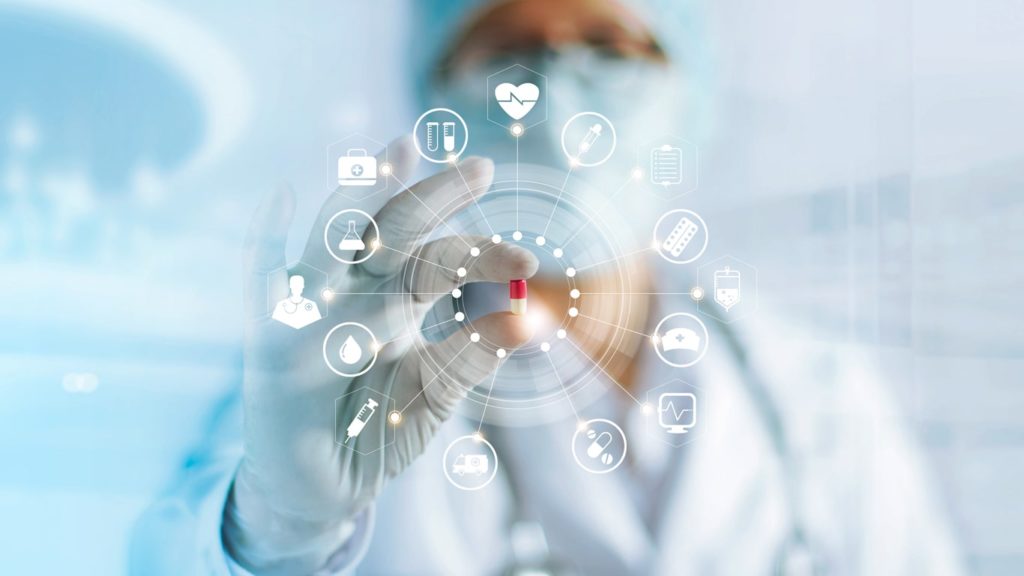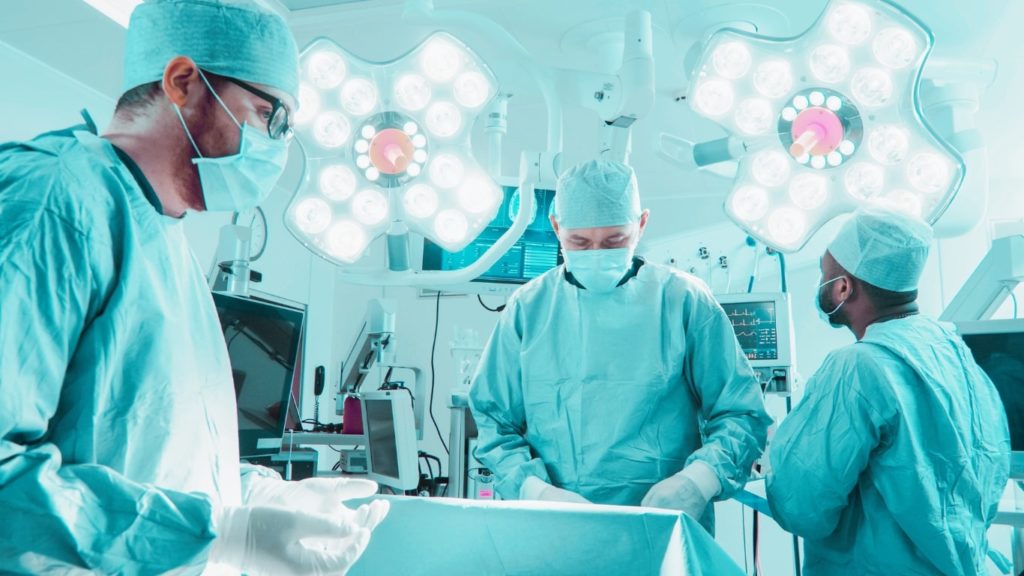
Healthcare has the greater responsibility of saving lives and improving the quality of care for patients. Naturally, the integration of technology in this sector happened quickly and gained momentum. The driving force behind innovation and technology in healthcare is a result of the increase in life expectancy. Therefore, tapping into the potential of medical technology has become more crucial than ever. Time is valuable in healthcare, and a little delay can cost lives. Hence, medical technology is used to treat patients in a timely manner.
Now that we know how important medical technology is, why not explore its definition, examples, and application further?
What is medical technology?
The collection of technologies used to prevent, diagnose, monitor, and treat diseases represents medical technology.
It aims at improving the health and well-being of patients. The equipment, devices, and tools are used to improve the accuracy, which further helps create better treatment plans for the patients. The problem with the traditional system was that it wasn’t that patient-friendly.
Medical technology has the upper hand when it comes to this. The treatment with medical technology is less invasive and time-efficient. That way, the patient not only gets quality care but the process is made comfortable for them.
Examples of medical technology

We went over the definition of medical technology, hence it’s time we look at its notable examples.
Robotic surgery
During surgery, surgeons have to take a lot of care to avoid damaging surrounding nerves and organs. That’s why robots are used for precisely controlling surgical instruments. A robot specialized in healthcare provides more control and offers flexibility.
In the future, more robots will be used to assist surgeons and enhance their work. In fact, robotics surgery comes with quite a lot of perks. For example, it reduces the risk of infection and blood loss. Additionally, it is comparatively less painful for the patients.
3-D Printing
3-D printing is used in healthcare to develop prosthetics. Along with this, it creates replicas of bones and organs specific to the patients. That way, the patients get customized treatment, keeping their worry about devices not fitting their anatomy at bay.
The other benefit of 3-D printing is that it saves time. The lead time is reduced, and that’s exactly what we need in critical situations. To sum up, 3D printing improves efficiency and comfort while reducing costs.
Bio-printing
In the healthcare industry, bio-printing is used to create artificial organs using biomaterials. This way, personalized treatment is provided to the patients. The cell is taken from the patient and then cultivated to create bio-ink. This bio-ink is then used to build structures like blood vessels or skin tissues using 3D printers.
Eventually, we can create printed organs for patients who need transplants. Additionally, bio-printing is used in drug development, increasing the success rate of clinical trials.
Virtual reality
Virtual reality (VR) is used for various purposes in health care, including providing medical training and treating patients. For training purposes, the VR is used to access and view details that are otherwise hard to grasp. It gives a 360° view, covering the minute details of the body part.
Surgical procedures can be a nightmare for patients. In such cases, they are offered the option of VR to reduce their feeling of anxiety. The calming view is presented through VR, helping them relax before, during, and after surgery. It is becoming increasingly popular in distracting patients from painful stimuli.
Wearable devices
Wearable devices are widely used to collect real-time data and measure the well-being of a person around the clock. They measure blood pressure, breathing rate, blood oxygen, temperature, and many other factors. This helps in managing health conditions and taking corrective measures as and when required.
Such a device allows patients to become active participants, helping them live healthy lives. Apart from this, healthcare professionals can connect to patients through the software on wearable gadgets, saving time and providing prompt treatment.
Applications of medical technology
Now that we have covered some examples of medical technology, it’s the right time we check its applications:
Medical technologies help in the early diagnosis of health problems
Medical technology shows great promise for diagnosing health problems early. Technologies such as Artificial Intelligence (AI) and Big Data are used for early detection and the creation of tailor-made treatment plans. Analyzing huge data sets gives insights that help to develop a healthy lifestyle.
Data is collected through wearable devices and interpreted through software to apply personalized treatment. Consequently, it boosts the overall care and quality of life of the patients.
It improves care coordination
The connectivity and communication are enhanced with the introduction of medical technology. That way, the right information is made available to make better care decisions. It provides healthcare professionals with tools to monitor patients proactively, involving them more to provide patient-centered care. In short, MedTech makes information available at one location, making follow-up care feasible.
Facilitates timely intervention
Take any medical condition, and you will observe that timely intervention improves the success rate of recovery. Ergo, medical technology is widely used to reduce mortality and morbidity. Telehealth promotes accessing healthcare information remotely. This further helps manage patients’ health better.
Alongside this, medical technology assists healthcare professionals in understanding the relationship of punctual intervention to the patient’s survival and quality of life.
Improves health outcomes
Medical technology not only raises efficiency and quality but also reduces costs. As mentioned, medical technology can make all relevant information available in one location. Therefore, various healthcare personnel involved in the process can access it and provide accurate care.
Not only this, it eliminates the need to conduct checkups frequently, as the patient’s information is securely stored and retrieved when required. Plus, it reduces miscommunication and errors significantly.
The other benefit of making information accessible is that clinicians have adequate knowledge to assist their patients. This significantly reduces the possibility of medication errors. Patients need to proactively participate in their treatment plans, too. Thanks to medical technology, they have the understanding and tools to do so. It helps them improve their health outcomes and enhance their quality of life.
Innovation in Medical Technology
Surely, the last couple of decades have been beneficial for the healthcare and pharmaceutical industries, all thanks to the rapid technological advancements that have seen many new inventions and discoveries.
The impact of medical technology can be considered mostly positive, as it has allowed us to live a healthier and longer life. However, what can we expect from technology in the future? Let us see the current innovation in medical technology and what it has in store for us:
Artificial intelligence (AI)
AI can use algorithms and machine learning to detect, diagnose and treat diseases. It has the potential to make early discoveries and provide a much more accurate diagnosis. Furthermore, it can also help with patient management and contribute to the overhaul of the healthcare industry. AI has also proven effective in monitoring incurable diseases such as breast cancer.
CRISPR gene editing
Gene modification is no longer limited to fiction, with CRISPR, gene editing technology has already been established and is undertaking new projects. It can transform the way we handle and treat diseases and has the potential to revolutionize personalized medicine and healthcare. It entails harnessing the natural mechanisms of viruses and then using them to cut out the affected strands of DNA to modify a disease on a molecular level.
Smart bandages
Another upcoming innovation in medical technology is the introduction of smart bandages. We are all familiar with the IoT wave and how we are constantly making devices smart by introducing them to the internet. The core idea behind smart bandages remains the same: the bandages are able to monitor the healing process to promote a much faster closure of wounds.
Neurotechnology
Neurotechnology is something with an unlimited amount of potential if harnessed correctly. The future of neurotechnology entails education, workforce management, national security, and even sports. It is basically a combination of machines and biology, but not like a cyborg.
Instead, it will make the technology a peripheral that can be attached to the biology of a human via the nervous system, making the technology similar to external limbs.
Precision Medicine
And finally, we have precision medicine, a technology that will unlock the next wave of innovation in healthcare, or at least that’s what the experts believe. It can be used to target genetic diseases and other rare ailments that affect individuals differently. The technology considers the variation in the genetics, environment, and lifestyle of the patient to find personalized solutions.
Impact of Medical Technology
We have already discussed the future implications of medical technology and concluded that they are mostly positive. However, there are also a few negative impacts of medical technology that one has to consider. This is why the following table explores both aspects of medical technology:
| Aspect | Positive | Negative |
|---|---|---|
| Patient care | Improved diagnostics and discovery will aid patients, along with better patient management. | Overreliance on technology can make us careless and also reduce patient-doctor interaction |
| Medical Efficiency | It has surely streamlined the healthcare workflow and reduced the amount of paperwork involved. | However, it will require a skilled staff, adding to training and onboarding costs. |
| Research | Already seen major breakthroughs and have started paving the path for the future. | But has also increased the risks of privacy and other ethical concerns. |
| Communication | It has made communicating with healthcare professionals much more efficient and easy. | However, we have to also acknowledge the digital divide and its effect on providing services. |
| Access | Made healthcare more accessible |